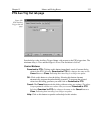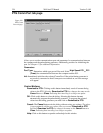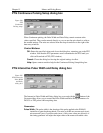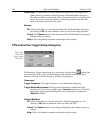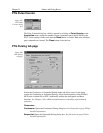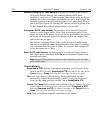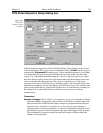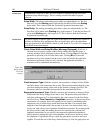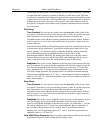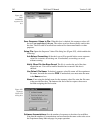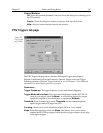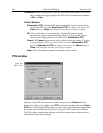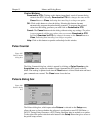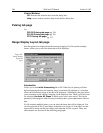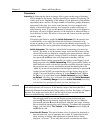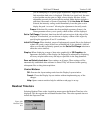
Chapter 15 Menus and Dialog Boxes 341
further apart but much wider to accommodate the lower signal amplitude. The result
is output data that is relatively constant in intensity over the decay time. This data
can be easily normalized by dividing each point by the exposure time and then using
a spline fit to recover the curve. The logarithm (base e) can then be taken to obtain a
straight line (or two lines successive line segments, each with a different slope for
two species). Tangents can be fitted to each segment to determine the rate constant
for each species.
Fast Decay
Time Constant:
In a two species system, enter the
decay time
of the faster of the
two species. Note that it is not essential that you enter a value. If you have the decay
time information, you will get better data if the information is entered, but
acceptable results can be obtained in many situations by using the default. If there is
only one species, or if you wish to discard the fast decay process, simply enter zero
for the Amplitude.
Note that the Pulse Width and Pulse Delay values need to be selected with some care
in fluorescence decay experiments. Typically the starting pulse width will be very
narrow, perhaps 2 ns, and the final pulse amplitude should be wider by about the
ratio of the anticipated signal amplitude decrease over the course of the
measurement timebase. Similarly, the starting pulse delay has to take the various
insertion delays into account, and the final delay value might typically be set to a
value on the order of five times the anticipated decay time of the process.
Amplitude:
This is the relative amplitude of the fast decay with respect to the slow
one. For example, if you know that the amplitude of the fast decay signal is typically
five times the amplitude of the slow decay signal, you could enter “5” for the fast
decay amplitude and “1” for the slow decay amplitude. Keep in mind that it is the
ratio that is being expressed. For example, there is no difference between entering
fast and slow amplitude values of “5” and “1” and entering fast and slow amplitude
values of “50” and “10.” Note that the default values will give satisfactory results in
many measurements.
Slow Decay
Time Constant:
In a two species system, enter the
decay time
of the slower of the
two species. Note that it is not essential that you enter a value. If you have the decay
time information, you will get better data if the information is entered, but
acceptable results can be obtained in many situations by using the default. If there is
only one species, or if you wish to discard the fast decay process, simply enter zero
for the fast decay Amplitude.
Amplitude:
This is the relative amplitude of the slow decay with respect to the fast
one. For example, if you know that the amplitude of the slow decay signal is
typically one fifth the amplitude of the fast decay signal, you could enter “1” for the
slow decay amplitude and “5” for the fast decay amplitude. Keep in mind that it is
the ratio that is being expressed. For example, there is no difference between
entering slow and fast amplitude values of “1” and “5” and entering fast and slow
amplitude values of “10” and “50.”
View Width/Delay Sequence:
Opens a window (shown below) that lists the currently
programmed sequence of pulse width and pulse delay values.



